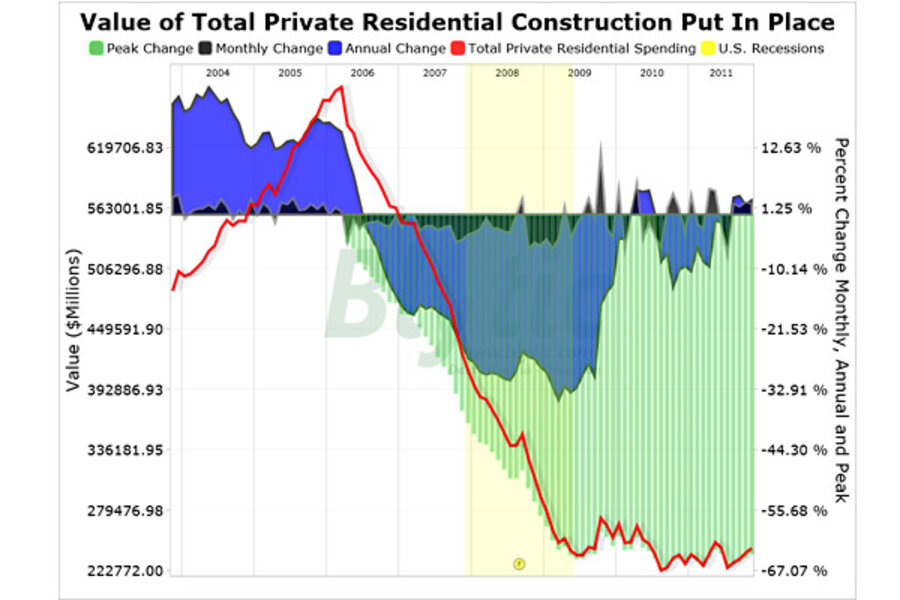November construction spending shows weak expansion
Loading...
Today, the U.S. Census Bureau released their latest read of construction spending showing near-cycle low levels of spending in November for residential construction while indicating a slight improvement for total non-residential spending.
On a month-to-month basis, total residential spending increased 2.01% from October and rose 2.70% above the level seen in November 2010 while remaining a whopping 63.97% below the peak level seen in 2006.
Single family construction spending increased 1.52% since October and rose 2.42% since November 2010 but remained a whopping 76.82% below it's peak in 2006.
Non-residential construction spending increased 0.4% since October climbing 4.46% above the level seen in November 2010 but remained a whopping 34.66% below the peak level reached in October 2008.
The following charts (click for larger dynamic versions) show private residential construction spending, private residential single family construction spending and private non-residential construction spending broken out and plotted since 1993 along with the year-over-year, month-to-month and peak percent change to each since 1994 and 2000 – 2005.







